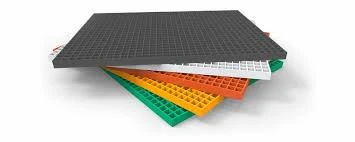
-
 Afrikaans
Afrikaans -
 Albanian
Albanian -
 Amharic
Amharic -
 Arabic
Arabic -
 Armenian
Armenian -
 Azerbaijani
Azerbaijani -
 Basque
Basque -
 Belarusian
Belarusian -
 Bengali
Bengali -
 Bosnian
Bosnian -
 Bulgarian
Bulgarian -
 Catalan
Catalan -
 Cebuano
Cebuano -
 China
China -
 China (Taiwan)
China (Taiwan) -
 Corsican
Corsican -
 Croatian
Croatian -
 Czech
Czech -
 Danish
Danish -
 Dutch
Dutch -
 English
English -
 Esperanto
Esperanto -
 Estonian
Estonian -
 Finnish
Finnish -
 French
French -
 Frisian
Frisian -
 Galician
Galician -
 Georgian
Georgian -
 German
German -
 Greek
Greek -
 Gujarati
Gujarati -
 Haitian Creole
Haitian Creole -
 hausa
hausa -
 hawaiian
hawaiian -
 Hebrew
Hebrew -
 Hindi
Hindi -
 Miao
Miao -
 Hungarian
Hungarian -
 Icelandic
Icelandic -
 igbo
igbo -
 Indonesian
Indonesian -
 irish
irish -
 Italian
Italian -
 Japanese
Japanese -
 Javanese
Javanese -
 Kannada
Kannada -
 kazakh
kazakh -
 Khmer
Khmer -
 Rwandese
Rwandese -
 Korean
Korean -
 Kurdish
Kurdish -
 Kyrgyz
Kyrgyz -
 Lao
Lao -
 Latin
Latin -
 Latvian
Latvian -
 Lithuanian
Lithuanian -
 Luxembourgish
Luxembourgish -
 Macedonian
Macedonian -
 Malgashi
Malgashi -
 Malay
Malay -
 Malayalam
Malayalam -
 Maltese
Maltese -
 Maori
Maori -
 Marathi
Marathi -
 Mongolian
Mongolian -
 Myanmar
Myanmar -
 Nepali
Nepali -
 Norwegian
Norwegian -
 Norwegian
Norwegian -
 Occitan
Occitan -
 Pashto
Pashto -
 Persian
Persian -
 Polish
Polish -
 Portuguese
Portuguese -
 Punjabi
Punjabi -
 Romanian
Romanian -
 Russian
Russian -
 Samoan
Samoan -
 Scottish Gaelic
Scottish Gaelic -
 Serbian
Serbian -
 Sesotho
Sesotho -
 Shona
Shona -
 Sindhi
Sindhi -
 Sinhala
Sinhala -
 Slovak
Slovak -
 Slovenian
Slovenian -
 Somali
Somali -
 Spanish
Spanish -
 Sundanese
Sundanese -
 Swahili
Swahili -
 Swedish
Swedish -
 Tagalog
Tagalog -
 Tajik
Tajik -
 Tamil
Tamil -
 Tatar
Tatar -
 Telugu
Telugu -
 Thai
Thai -
 Turkish
Turkish -
 Turkmen
Turkmen -
 Ukrainian
Ukrainian -
 Urdu
Urdu -
 Uighur
Uighur -
 Uzbek
Uzbek -
 Vietnamese
Vietnamese -
 Welsh
Welsh -
 Bantu
Bantu -
 Yiddish
Yiddish -
 Yoruba
Yoruba -
 Zulu
Zulu
Exploring the Benefits of CPVC FRP Tanks for Chemical Storage Solutions
Understanding CPVC FRP Tanks A Comprehensive Overview
In the world of industrial storage solutions, the demand for durable, chemical-resistant tanks has never been greater. Among the various options available, CPVC (Chlorinated Polyvinyl Chloride) FRP (Fiber Reinforced Plastic) tanks have emerged as a leading choice due to their unique properties and versatility. This article explores the characteristics, benefits, and applications of CPVC FRP tanks.
What is CPVC FRP?
CPVC is a thermoplastic material that offers enhanced resistance to heat, corrosion, and chemical interactions compared to standard PVC. It is widely used in piping systems, especially for transporting hot and corrosive fluids. When combined with Fiber Reinforced Plastic, which incorporates fiberglass for added strength and rigidity, CPVC becomes even more effective. FRP is known for its lightweight nature and high resistance to a variety of chemicals, making it a popular choice in harsh environments.
Benefits of CPVC FRP Tanks
1. Corrosion Resistance One of the most significant advantages of CPVC FRP tanks is their resistance to corrosion. Traditional metal tanks can succumb to rust and chemical damage over time, leading to costly repairs and downtime. In contrast, CPVC FRP tanks maintain their integrity in a wide range of corrosive environments.
2. Lightweight Yet Strong The combination of CPVC and fiberglass results in a product that is considerably lighter than metal alternatives while still being robust enough to withstand high pressures and stresses. This lightweight property simplifies installation and reduces transportation costs.
3. Temperature Tolerance CPVC can handle higher temperatures than regular PVC, making it suitable for applications involving hot fluids. FRP enhances this capability, enabling these tanks to function effectively across a broader range of temperatures.
cpvc frp tank

4. Low Maintenance Due to their corrosion-resistant properties, CPVC FRP tanks require less maintenance than traditional storage tanks, which can save businesses both time and money in the long run.
5. Versatile Applications CPVC FRP tanks are used across various industries, including chemical processing, water treatment, food and beverage, pharmaceuticals, and more. They are ideal for storing chemicals, acids, and other reactive substances safely.
6. Environmentally Friendly Being a thermoplastic, CPVC is recyclable, and when used in combination with FRP, these tanks can contribute to reducing environmental impact. Responsible disposal methods can ensure that materials are reused or recycled, aligning with sustainability efforts.
Applications of CPVC FRP Tanks
The versatile nature of CPVC FRP tanks allows them to be used in numerous applications. In the chemical processing industry, they serve as storage tanks for acids, solvents, and other hazardous materials. In water treatment facilities, they store treated and untreated water, ensuring safe handling of chemicals involved in the purification processes. Furthermore, in the food and beverage industry, CPVC FRP tanks meet the stringent hygiene standards necessary for storing various ingredients safely.
Conclusion
In conclusion, CPVC FRP tanks are a revolutionary solution for industries requiring robust, corrosion-resistant storage options. With their lightweight design, impressive temperature tolerances, low maintenance requirements, and versatility across various applications, they represent a forward-thinking choice for modern industrial needs. As environmental considerations become increasingly critical, the recyclability of CPVC further enhances its appeal, making it a sustainable option for the future. By investing in CPVC FRP tanks, businesses can ensure efficiency, safety, and durability in their operations.
Latest news
-
Exploring the Benefits of Top Hammer Drifter Rods for Enhanced Drilling PerformanceNewsJun.10,2025
-
High-Precision Fiberglass Winding Machine for GRP/FRP Pipe Production – Reliable & Efficient SolutionsNewsJun.10,2025
-
FRP Pipes & Fittings for Shipbuilding - Corrosion-Resistant & LightweightNewsJun.09,2025
-
Premium FRP Flooring Solutions Durable & Slip-ResistantNewsJun.09,2025
-
Premium Fiberglass Rectangular Tanks Durable & Lightweight SolutionNewsJun.09,2025
-
Tapered Drill String Design Guide Durable Performance & UsesNewsJun.09,2025









